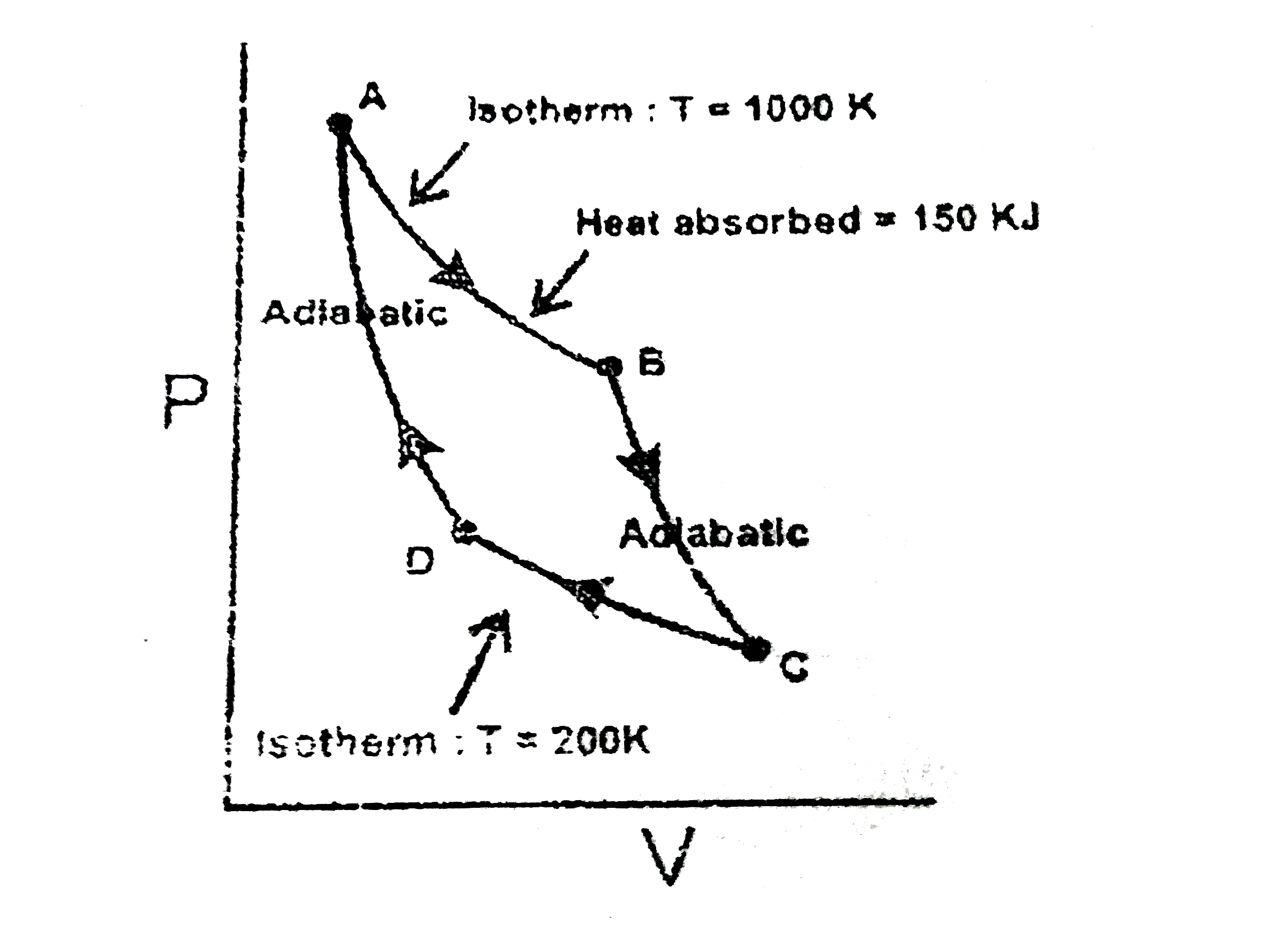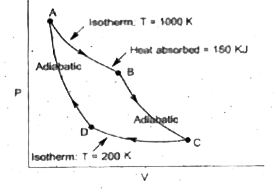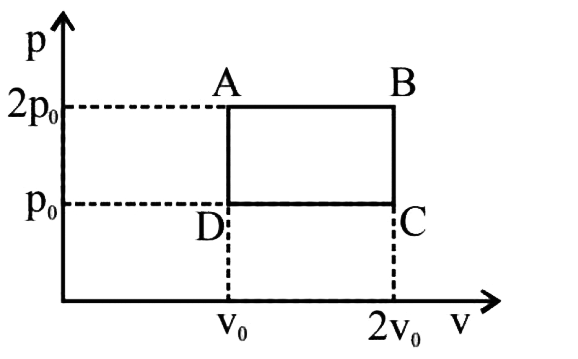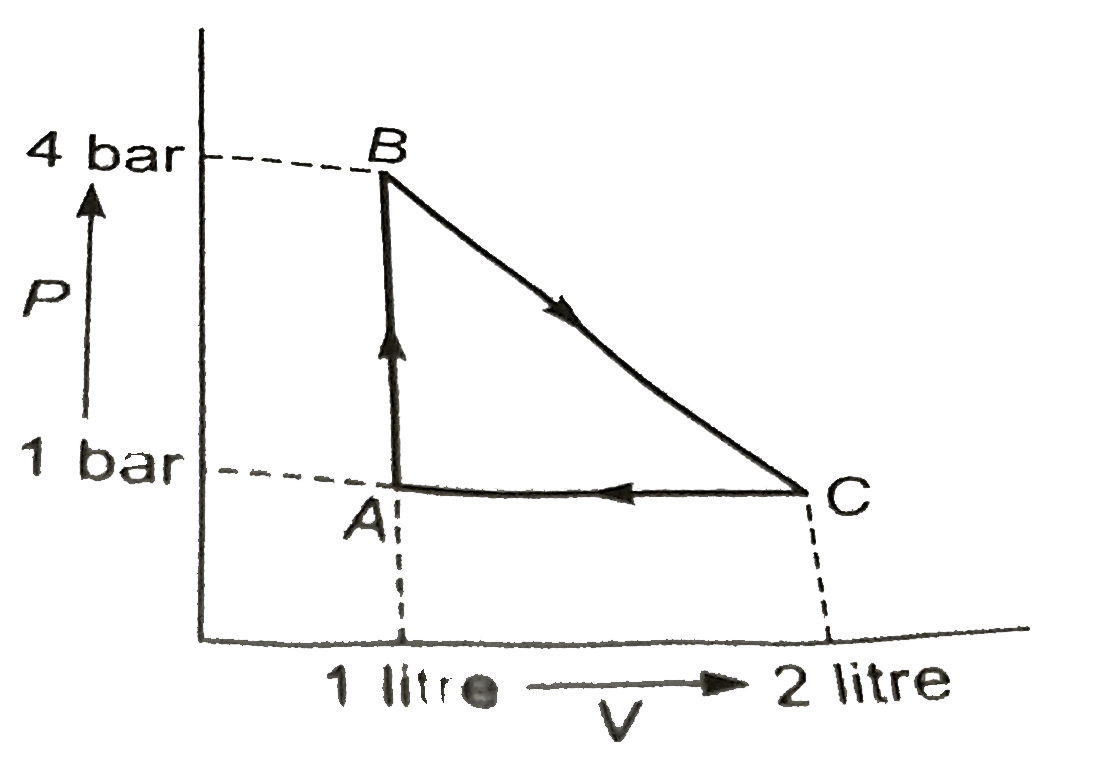The accompanying diagram represents a reversible cannot cycle for an ideal gas:

How many heat is rejected at the lower temperature, 200K, during the isothermal compression?
150 KJ
30KJ
120KJ
data are not sufficient to calculate exact value
The correct Answer is:B
−qc=qn(TcTh)=150×2001000
Heat rejected =30 KJ
Topper's Solved these Questions
- THERMODYNAMICSBOOK - RESONANCE ENGLISHCHAPTER - THERMODYNAMICSEXERCISE - exercise-3 part-III Advanced level Solutions (STAGE-I)
6 Videos
- THERMODYNAMICSBOOK - RESONANCE ENGLISHCHAPTER - THERMODYNAMICSEXERCISE - exercise-3 part-III Advanced level Solutions (STAGE-II)
38 Videos
- THERMODYNAMICSBOOK - RESONANCE ENGLISHCHAPTER - THERMODYNAMICSEXERCISE - exercise-3 part-1 Advanced level Solutions
30 Videos
- TEST SERIESBOOK - RESONANCE ENGLISHCHAPTER - TEST SERIESEXERCISE - CHEMISTRY
50 Videos
Similar Questions
The accompanying diagram represents a reversible cannot cycle for an ideal gas:

What is the entropy increase during isothermal at 1000K?
View SolutionThe accompanying diagram represents a reversible cannot cycle for an ideal gas:

What is the Gibbs free energy change during the process A→B ?
View SolutionThe accompanying represents a reversible camot cycle for an ideal gas:

What is the entropy increase during isothemal expansion at 1000 K?
View SolutionWhen an ideal gas is compressed adiabatically and reversibly, the final temperature is:
View Solution
The above p-v diagram represents the thermodynamic cycle of an engine, operating with an ideal monoatomic gas. The amount of heat extracted from the source in a single cycle is
View Solution
The above p-v diagram represents the thermodynamic cycle of an engine, operating with an ideal monoatomic gas. The amount of heat, extracted from the source in a single cycle is
View SolutionWork done during isothermal expansion of one mole of an ideal gas from 10 atm to 1atm at 300 k is
View SolutionThree processes compose a thermodynamic cycle shown in the accompanying P−V, diagram of an ideal gas.
Process 1→2 take place at constant temperature, during this process 60J of heat enters the system.
Process 2→3 takes place at constant volume. During this process 40J of heat leaves the system.
Process 3→1 is adiabatic.
What is the change in internal energy of the during process 3→1?
View SolutionAn ideal monoatomic gas occupies volume 10−3m3 at temperature 3K and pressure 103Pa. The internal energy of the gas is taken to be zero at this point. It undergoes the following cycle: The temperature is raised to 300K at constant volume, the gas is then expanded adiabatically till the temperature is 3K , followed by isothermal compression to the original volume . Plot the process on a PV diagram. Calculate (i) The work done and the heat transferred in each process and the internal energy at the end of each process, (ii) The thermal efficiency of the cycle.
View SolutionOne mole of an ideal gas is carried through the reversible cyclic process as shown in figure. The max. temperature attained by the gas duing the cycle

View Solution
